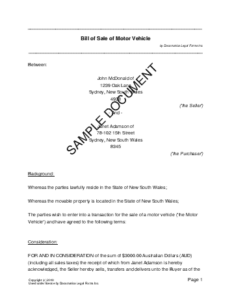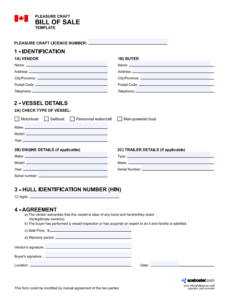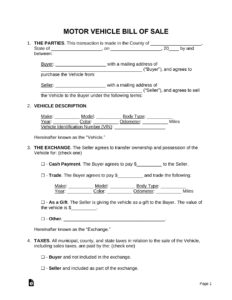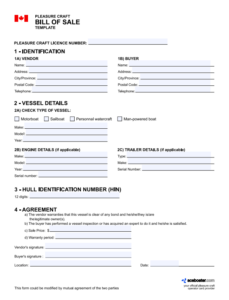Purchasing or selling a boat is an exciting venture, whether you’re dreaming of weekend fishing trips on the Queensland coast or leisurely cruises along Sydney Harbour. However, amidst the excitement of a new acquisition or the satisfaction of a successful sale, it’s easy to overlook crucial administrative steps. One of the most vital documents in this process, often underestimated, is a comprehensive bill of sale. It’s more than just a receipt; it’s a legal cornerstone that protects both parties involved in the transaction.
A properly executed bill of sale establishes a clear record of ownership transfer, providing peace of mind and legal standing should any disputes arise down the track. From detailing the vessel’s specifics to outlining the terms of the sale, this document acts as your official proof that the boat has changed hands. For anyone navigating the waters of boat ownership in Australia, understanding and utilising this document correctly is paramount for a smooth and secure transaction.
Why You Absolutely Need a Boat Bill of Sale in Australia
When you’re dealing with a significant asset like a boat, having ironclad proof of ownership is not just a good idea, it’s essential. A boat bill of sale in Australia serves as the official legal document that records the transfer of ownership from the seller to the buyer. Without it, verifying who legally owns the vessel can become incredibly complicated, particularly when it comes to registration with state maritime authorities like Marine Safety Victoria, Maritime NSW, or Queensland Transport and Main Roads, or even during future resale. It acts as the cornerstone for proving legitimate ownership, which is critical for everything from insurance claims to potential legal challenges.
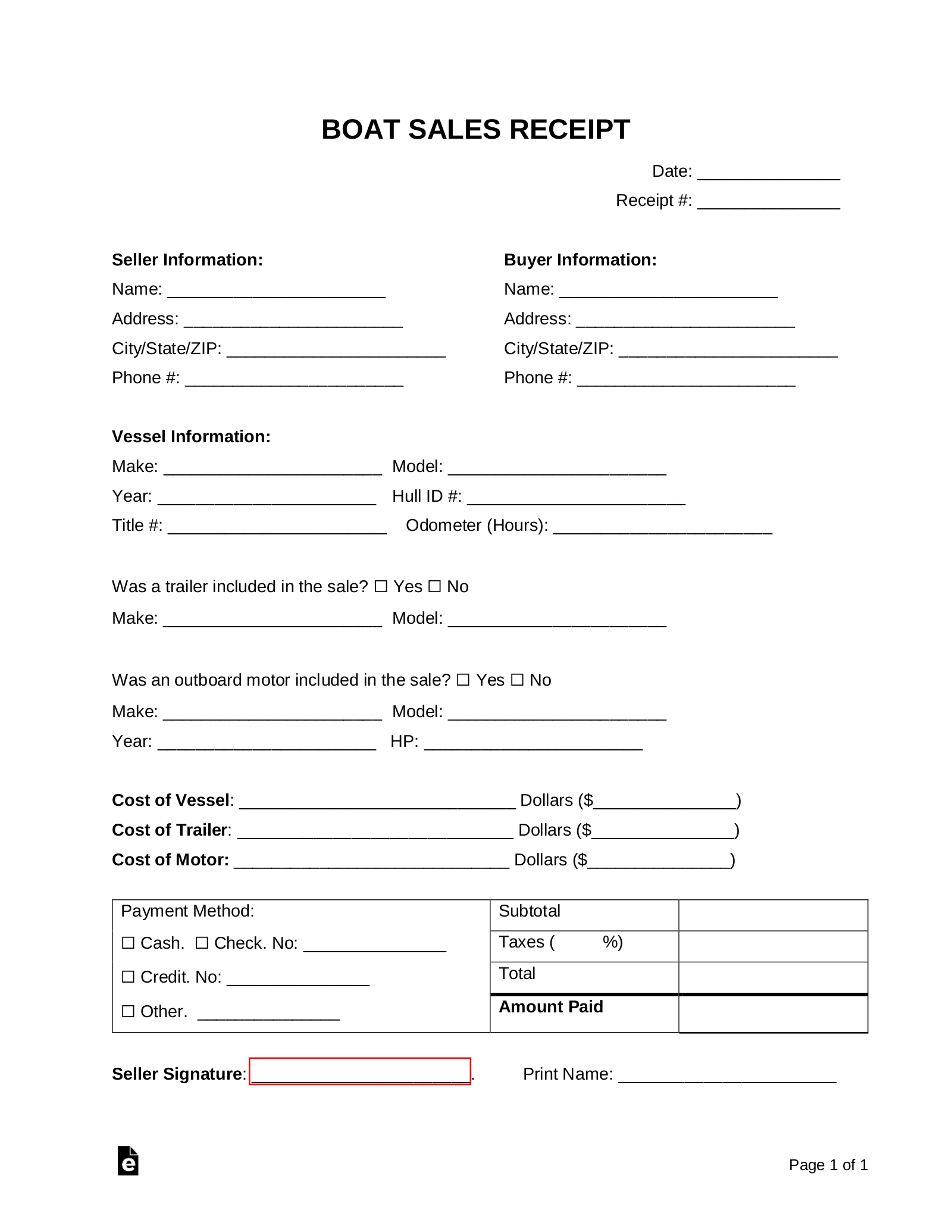
For the buyer, a robust bill of sale offers crucial protection. It verifies that the seller is indeed the rightful owner of the boat and has the legal authority to sell it. The document should clearly state that the vessel is free from any liens, encumbrances, or outstanding debts, ensuring you’re not inheriting someone else’s financial baggage. Furthermore, it provides an accurate description of the vessel, including its make, model, hull identification number (HIN), engine details, and any included accessories, safeguarding you against misrepresentation.
Conversely, sellers benefit immensely from a properly documented transaction. A signed bill of sale clearly marks the point at which responsibility for the boat transfers to the new owner. This protects the seller from any liability for incidents that occur after the sale date, such as accidents, fines, or registration issues. It’s definitive proof that you no longer own the vessel, allowing you to cancel insurance policies and cease any related financial obligations with confidence.
Beyond proving ownership and protecting parties, a bill of sale is often a prerequisite for several administrative tasks. It’s typically required for registering the boat in the new owner’s name with the relevant state maritime body, applying for marine insurance, and in some cases, even for tax purposes. Skipping this vital step can lead to significant headaches, delays, and potential legal issues down the line, making a clear and comprehensive record indispensable.
Key Information to Include
- Full names and contact details of both the buyer and the seller.
- A detailed description of the boat, including make, model, year, colour, hull identification number (HIN), and registration number.
- Information about the engine(s), such as make, model, horsepower, and serial numbers.
- A list of any included accessories, like trailers, safety equipment, or electronics.
- The agreed-upon purchase price and the method of payment.
- The date and time of the sale and transfer of ownership.
- A statement confirming whether the boat is sold “as is” or with any warranties.
- Signatures of both the buyer and the seller, ideally witnessed.
Getting Your Hands on a Reliable Boat Bill of Sale Template Australia
Finding a suitable boat bill of sale template Australia can significantly streamline your boat transaction process. Rather than attempting to draft a legal document from scratch, which can be prone to errors and omissions, a pre-designed template ensures that all the necessary legal and practical information is included. These templates are readily available online from various legal document providers, government maritime authority websites, or even through reputable marine industry associations. Opting for a template saves time, reduces stress, and provides a professional framework for your sale or purchase.
When searching for a template, it’s crucial to select one that is specifically tailored for Australian jurisdiction. While many international templates exist, they may not align with Australian legal requirements or include specific fields relevant to local maritime laws and registration processes. A good template will be comprehensive, covering all the essential details from both the boat itself and the terms of the sale, leaving no room for ambiguity. Look for options that are easily customisable, allowing you to input specific details about your vessel and the unique conditions of your agreement.
Even with a template, it’s important to remember that it serves as a foundation, not necessarily a one-size-fits-all solution. You should carefully review every section and fill in all the blanks accurately and completely. Don’t hesitate to add extra clauses or details that are pertinent to your specific sale, such as specific warranties (or lack thereof), details about inspections, or agreements on delivery. Think of the template as a robust checklist that guides you through ensuring every critical aspect of the transaction is formally documented.
Once you’ve completed and agreed upon all the details in the boat bill of sale, the final steps are critical for its validity and effectiveness. Both the buyer and the seller should sign multiple copies of the document. It’s highly recommended to have the signatures witnessed by an independent third party, further solidifying its legal standing. Each party should retain a signed original for their records, and it’s also wise to keep a digital copy. Finally, remember to notify the relevant state maritime authority about the change of ownership to ensure the boat’s registration is accurately updated, preventing any future administrative hassles.
Securing a robust and comprehensive bill of sale for your boat transaction is a non-negotiable step for ensuring a smooth and legally sound transfer of ownership. It protects your interests as both a buyer and a seller, providing clear documentation of the agreement. By utilising a suitable Australian-specific template and meticulously completing all necessary details, you can navigate the complexities of boat sales with confidence and peace of mind.
